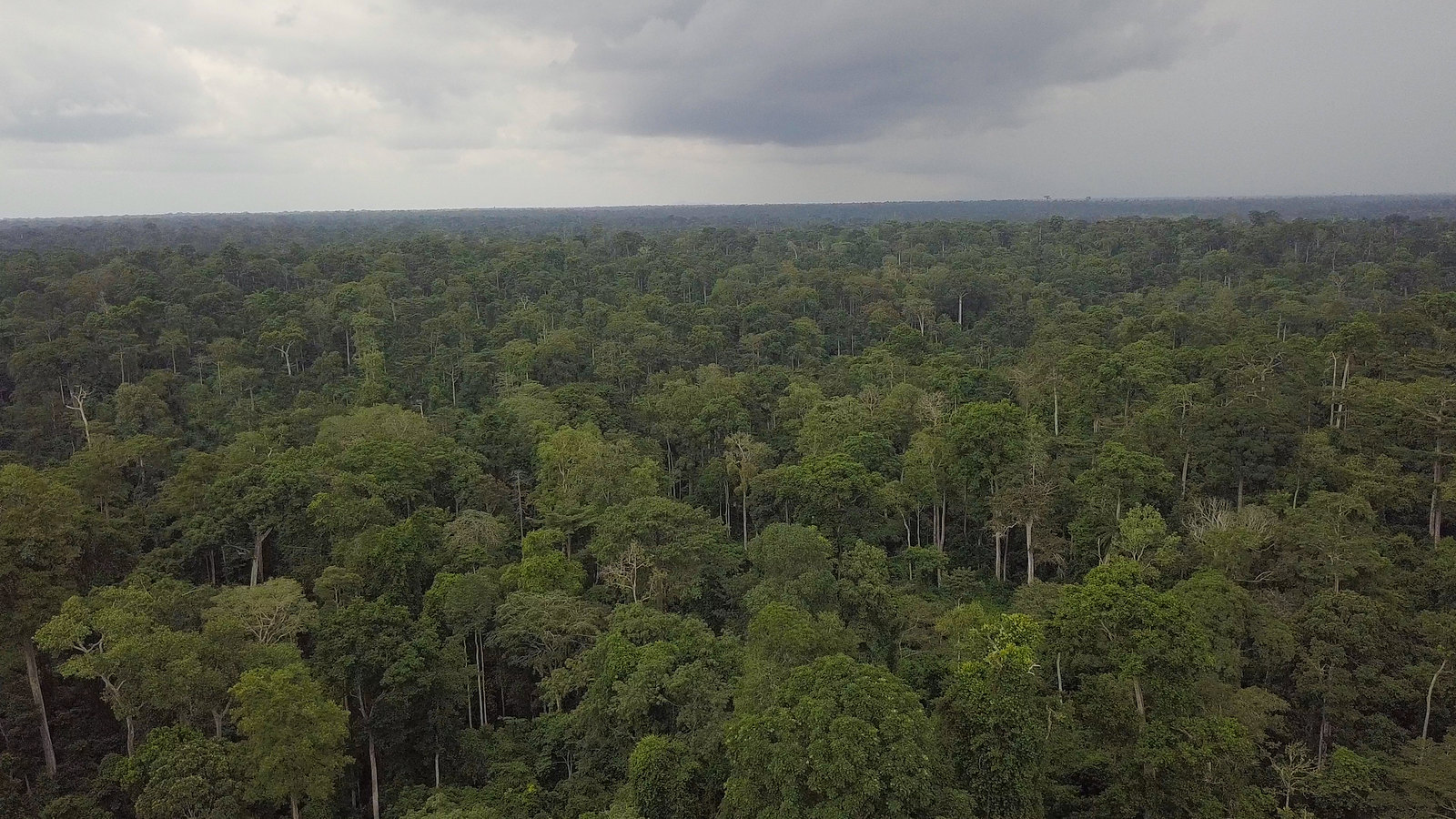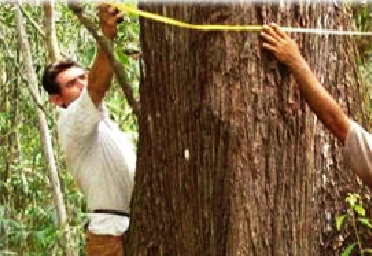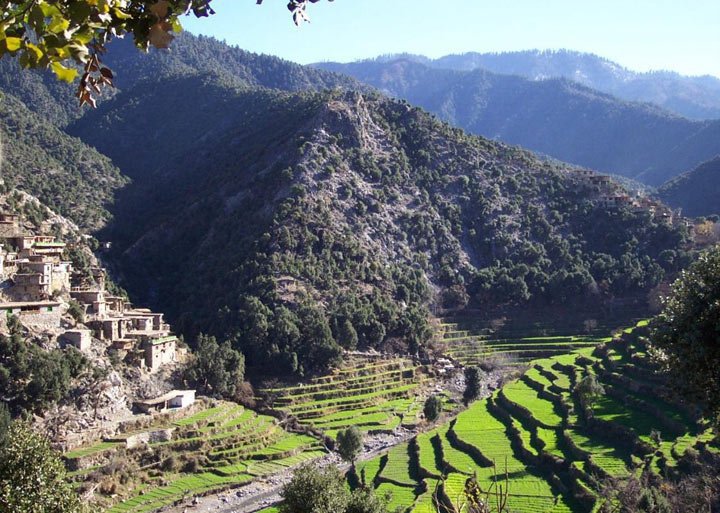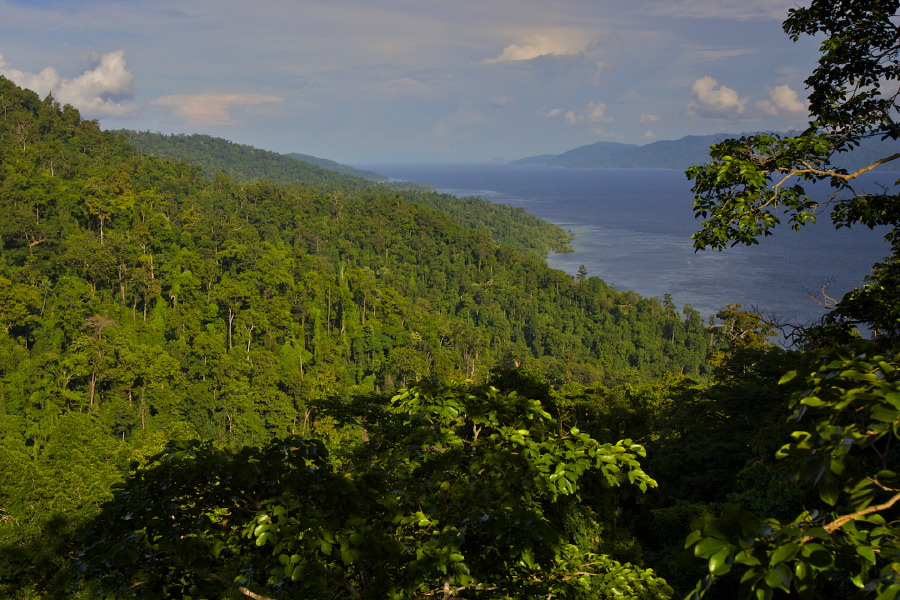Forest governance

Share
Strengthening Forest Governance in Côte d’Ivoire

This piece by Meerim Shakirova and Nalin Kishor was originally published by the Climate Investment Funds.
- Forest development plans and budgets address the main drivers of deforestation and degradation
- The law has specific provisions for sharing benefits from public forests with local communities
- Provisions of the law protect the environmental and cultural contributions of forests
- Women participate in forest-related decision-making
- Field foresters have the capacity to properly oversee the areas assigned to them
For stories and updates on related activities, follow us on twitter and facebook , or subscribe to our mailing list for regular updates.
Last Updated : 06-16-2024

From Low-tech to High-tech: Practical Tools for Making Forest Operations Legal
It’s not clear what exactly constitutes Sustainable Forest Management (SFM); in fact, there isn’t wide consensus on how to define it.[i] What is evident is that healthy forests support a wide range of services for ecosystems and livelihoods – from food and firewood, to erosion control, pollution mitigation, and carbon storage – and that good governance is essential for ensuring that these benefits persist. Forests are also a valuable economic good, and their sustainable use creates jobs and brings revenue. Conversely, weak forest management is often associated with illegal logging, forest degradation or deforestation, the loss of ecosystem services, and the marginalization of people who depend on forests for their livelihoods. Precisely because forest governance is most apparent in terms of outcomes - whether positive or negative - tangible guidelines for forest governance as a process are needed.
The Toolkit of Forest Control and Supervision: Practical Field Guidance, supported by PROFOR[ii], meets this need by providing low-cost, hands-on tools for forest management. The Toolkit was primarily designed for the government officers of forest agencies, particularly in tropical countries seeking to implement timber legality verification systems.
Indeed, the demand for certified sustainable wood products has grown as governments and development organizations have recognized both the environmental damage associated with illegal forest activities, and the global economic loss: the World Bank estimates that governments lose as much as US$5 billion annually from evaded taxes and royalties on legally sanctioned logging alone.[iii] However, in many cases timber-producing countries are not prepared to meet the verification requirements laid out by legislation (such as the amended US Lacey Act, the EU Timber Regulation, and the Australian Government’s Illegal Logging Prohibition Bill) or international agreements (including the Convention on International Trade in Endangered Species of Wild Fauna and Flora (CITES)).
The Toolkit’s first component is a user’s field manual for verifying the legal origin of timber, with a focus on inspections in forests, sawmills and lumber yards – an important step towards verifying that the volume of timber actually harvested matches the volume planned, and complies with forest regulations. The modules provide details on how to organize an inspection team, how to determine if a particular tree is missing, and how to calculate the volume of standing trees and different timber products, among other procedures. The chapter also provides a list of lessons learned from forest-rich countries like Nicaragua and Costa Rica, emphasizing best practices such as avoiding conflicts of interest within forest monitoring systems, which might arise from receiving financing from logging companies, for example.
The second component in the Toolkit provides guidance for setting up logging contracts between the forest industry and indigenous peoples’ (IPs) communities. Some 60 million IPs are totally dependent on forests, and as demand for valuable timber continues to grow and IP land rights are increasingly recognized, contracts between IPs and loggers are becoming more frequent. The goal of this module is to improve logging contracts for the benefit of IPs, including by supporting community-run committees for forestry monitoring. Practitioners from Bolivia and Peru provided essential input to this component, as documented experiences related to commercial relationships between loggers and IP communities are practically non-existent.
One of the primary goals of the Toolkit was to strike a balance between providing the tools necessary for forest control and supervision, and keeping the them simple, practical and user-friendly.
"We often think that improving forest monitoring requires expensive technology,” says Tuukka Castrén, Senior Forestry Specialist and lead author. “This is only partially true. While modern ICT can help us tremendously to improve transparency and accountability, lots can be done with low-tech solutions as well. Having a systematic and well-structured approach to monitoring and community engagement takes us a long way, even if the methods we use are still manual. The good thing is that mobile devices and other technology can then be introduced gradually. This Toolkit describes a low-cost model for improving forest governance. More advanced systems can then be built on this once we have more resources and experience."
Besides supporting government officers in implementing national forest strategies, the authors anticipate that the Toolkit will also be helpful to national scientific and management authorities, World Bank Task Team Leaders (TTLs), the private sector, local communities, and NGOs and other civil society involved in sustainable forest management.
[i] The most widely inter-governmentally agreed-on language on SFM is represented in the non‒legally binding instrument (NLBI) on all types of forests of the United Nations Forum on Forests (UNFF): “Sustainable forest management as a dynamic and evolving concept aims to maintain and enhance the economic, social and environmental value of all types of forests, for the benefit of present and future generations.”
[ii] The toolkit incorporates lessons learned from field activities financed by the Forest Law Enforcement and Governance trust fund, which closed in 2013.
[iii] World Bank (2008). Forests Sourcebook. Washington, DC
For stories and updates on related activities, follow us on twitter and facebook , or subscribe to our mailing list for regular updates.
Last Updated : 06-16-2024

Programmatic Approach on Forest Management in South Asia
CHALLENGE
Countries in South Asia are increasingly committed to the improved management of the region’s forests, including for the purpose of making progress towards individual Intended Nationally Determined Contributions (INDCs) for mitigating and adapting to climate change.
However, South Asia faces significant challenges in managing its forest sector. For example, decades of conflict in Afghanistan have led to substantial forest loss, while in India, forest cover has stabilized but forest quality is deteriorating. In other countries, development pressures from expanding settlements and agriculture are driving the conversion of forestlands.
As the pressures on forests continue to grow, it is imperative to better understand and measure the current economic contribution of forests, including the costs of forest degradation. It is equally important to assess the efficacy of current regulations and policies around forests, accompanied by an assessment of institutions and technical capacity, where needed. Lack of policies on payments for ecosystem services, for instance, can hinder beneficial forest management activities for reducing sediment in the upper catchments of hydropower plants, or prevent communities from benefitting from such payment mechanisms. At the same time, weak institutions and lack of technical capacity can prevent even the most progressive forest policies from supporting inclusive and sustainable economic growth.
APPROACH
The objective of this activity is to inform policy dialogue and strategic engagement on forests with South Asian countries as governments move towards sustainable and inclusive economic growth. This programmatic approach consists of the following activities:
- Afghanistan Capacity Development for Natural Resource Management (NRM): In Afghanistan, conflict and the lack of adequate governance structures and management and institutional capacity have heavily damaged the natural resource base that the majority of the population relies on, particularly in rural areas. This activity aims to: (i) raise awareness about the NRM role in supporting livelihoods, enhancing resilience, and reducing vulnerability to climate change and disaster risks; and (ii) assess the capacity of key institutions to implement the newly adopted NRM Strategy.
- Forests, Poverty and Resilience in Bangladesh: The World Bank is undertaking a Country Environmental Analysis focused on urban areas, to demonstrate cost-effective development pathways that tackle acute pollution levels and natural resource degradation in Dhaka, while at the same time controlling congestion and environmental externalities in newly growing cities. As part of this larger activity, PROFOR funding will support an investigation into natural infrastructure’s potential benefits for climate resilience in urban areas and peripheries. Outputs will include an analytical report on the cost of forest degradation in terms of lost revenues, incomes for local communities, and increased damage from extreme events; engagement workshops to consult key stakeholders and discuss the direction of the assessments, the preliminary findings and policy implications; and dissemination workshops.
- India Forest Sector Assessment: To better understand current and emerging challenges in forest management, this activity will assess the demand and supply of forest and timber resources in India, as well as the economic costs of the timber trade and forest fires, and the scope for forest-related agribusinesses to generate jobs. In addition, the activity will identify options for restoring degraded forests, sustainably managing forests, and strengthening forest monitoring and evaluation.
- Pakistan Forestry Sector Engagement Study: Pakistan’s diverse forest resources face rapid deterioration as a result of land conversion by large development projects, and overexploitation by poor communities who have few livelihood alternatives. In response, this activity aims to better understand the contribution of the forestry sector to achieving the country’s development priorities. PROFOR is supporting a review of forest sector policies and management practices through the collection and analysis of secondary information, as well as stakeholder consultations with federal and provincial government officials, development partners, civil society organizations and research institutions.
- Nepal Forests, Poverty and Tourism: The aim of this project is to strengthen the Government of Nepal’s capacity to better manage its natural resources, to deliver on its national goal to reduce poverty through sustainable and inclusive growth. The activity outputs will include: (i) A policy assessment of current practices in management of natural resources, including for tourism purposes and current and potential linkages between conservation, hydropower development, and tourism; and (ii) an engagement note describing the potential contributions of forests to economic growth and jobs, sustainable water resources management, and hydropower development.
- General Knowledge Management: To disseminate the knowledge generated from the various country activities, this component will share experiences and best practices among policy makers and technical experts from the region, including through workshops and study tours, and produce regional and cross-country policy briefs to inform forests investments and policy design.
RESULTS
- In Afghanistan, The development objective was achieved by taking stock of existing practices, engaging the sector’s key stakeholders in an ongoing dialogue at various levels, assessing capacity of Ministry of Agriculture, Irrigation and Livestock (MAIL), and by developing knowledge about key areas of interest to the Government counterpart. This activity was used as a process for interacting with stakeholders and development partners through informal meetings, knowledge exchange, and high-level roundtables. The MAIL delegation, through the exchange visits to India, learnt about the critical and productive role of women in the NRM sector. They noted that the Natural Resources Management practices relating to gender specific roles such as women-managed committees for better management of renewable natural resources could be replicated in Afghanistan.
In Bangladesh, a wetland background paper has been finalized. The study is cross-sectoral and covers urban waste management and urban planning/development issues as well as urban wetlands issues. The findings have informed another ASA led by World Bank`s Urban Global Practice “Toward Greater Dhaka”. The study also identified issues and areas of priority in terms of urban environment governance. The report launch event, held on September 16, 2018, was attended by various ministries and departments of Government of Bangladesh, including Ministry of Environment and Forest, Ministry of Water Resource, Ministry of Commerce, ERD, Planning Commission, BREB, LGED, Department of Environment (DOE), DWASA, as well as members of academia, private sector, civil society and media. The findings created avid interest among the attendees and received significant media coverage. The Government of Bangladesh showed interest in new operations around solid and hazardous waste management and the follow up TA will help better scope the potential investments through policy dialogue.
The regulatory and institutional analysis conducted as part of CEA informed and made recommendations to ongoing revision of Environment Conservation Rule. The CEA has also contributed to enhancing environmental aspects of the Dhaka Diagnosis led by the World Bank Urban team. The mission had meetings with the DoE on the need to continue with the CEA discussions to identify follow-on activities to address issues of pollution management in Bangladesh’s urbanizing context. The DoE expressed their need for support to assess the size of the pollution problem and to set up a continuous monitoring system. The recommended policy reforms will be followed up as part of policy notes prepared based on the CEA.
- In India, All three objectives of the activity have been met. (i) The recommendations of the Forest Fire Prevention and Management Report have been fully taken onboard to inform the National FFPM Plan that is under preparation. (ii) The Forest Survey of India (FSI) is the lead agency in-charge of developing tools for forest fire detection in India. As part of the ASA, scientists at FSI had the opportunity to interact with scientists from NASA, and Australian experts on Fire Danger Rating Systems, and attend training on data and tools by NASA. This in turn helped FSI improve its forest fire detection tool and to launch a new tool on Fire Danger Rating System. The latter is now being tested and piloted in Indian states such as Uttarakhand. (ii) As previously, described, a workshop with national and international experts was organized in November 2017 to share experiences with best practices on forest fire management. This activity has been completed.
In Nepal, Both outputs under this activity have been completed: (i) Sustainable Tourism Development in Nepal – this report is a joint output of ENR and FCI and provides an overview of potential for tourism development in Nepal, an assessment of the main challenges, and recommendations for way forward. (ii) Promoting Sustainable Tourism in Protected Areas – this is a compilation of case studies of nature-based tourism that can benefit communities and conservation. The Sustainable Tourism Development in Nepal report has helped inform the design of the Nepal Tourism project that is under preparation.
The compilation of case studies on nature-based tourism was used to organize the Conference on Sustainable Nature-based Tourism: Sharing Global Experience in Protected Areas in Nepal on January 21-22, 2019. This conference was jointly organized by ENR GP, FCI GP, and IFC with the Ministry of Forest and Environment (MoFE), Government of Nepal (GoN). GoN officials were very happy with the opportunity granted by the conference to share global experiences, particularly to hear from community leaders and private sector actors on sustainable and inclusive tourism models. One direct and immediate outcome of the conference was an announcement from the MoFE to consult a wide range of stakeholders on the draft Working Procedures. This was a request from one of the conference participants particularly to consult tourism operators, and MoFE officials made a commitment to do so during the closing session. The close-door session on the second day also led to a very productive discussions and a request from the GoN for WBG to provide inputs to the Working Procedures through inputs from experts and a Study Tour for park managers to expose them to innovative models of tourism in protected areas that support conservation and benefit communities.
- In Pakistan, a forest sector review (Policy Note) to highlight available information about the forest sector in Pakistan, its key economic and ecological contributions and challenges faced by the sector has been completed and published here. The forest sector review has identified major issues of the forest sector in the country. It also highlighted challenges and opportunities for promoting forest investments in major ecological zones (different forest types) and poor communities of the country. Lessons learned from previous and ongoing forest investments in the country has been analyzed. It has helped the World Bank to recognize importance of forests, and opportunities it provides in supporting local livelihood, national economy, climate change resilience, gender balance and maximizing finance for development. As a result, the Bank might engage with the federal government to develop a forest project. A more detailed report prepared by FAO was launched on August 1, 2019 by the Advisor to the Prime Minister on Climate Change, Malik Amin Aslam and FAO Representative in Pakistan, Minà Dowlatchahi. Two more studies financed by other sources are being finalized, which build on the findings of the forestry sector review. A study on value chain of key NTFP is ongoing. Another study on catchment management case on the Mangla Dam is also linked with the regional KGGTF catchment study and will be finished by June 2019.
For stories and updates on related activities, follow us on twitter and facebook , or subscribe to our mailing list for regular updates.
Last Updated : 06-16-2024

An economic cost-benefit analysis of forest conservation and restoration in Nicaragua
Program Summary
This PROFOR activity aimed to provide evidence to the Government of Nicaragua on the economic benefits of forest landscape restoration activities. The knowledge generated from this activity was intended to improve policy makers’ ability to made decisions on investments going towards rural livelihoods and incomes, reduced GHG emissions, and greater climate risk resilience.
Challenge
Based on climate change projections, water availability is likely to decline in most of Nicaragua's watersheds. A three-year drought, coupled with massive deforestation in the past few decades, has depleted most of Nicaragua’s water sources which is threatening the country’s future water supply. In fact, the country has lost up to 60 percent of its surface water sources and up to 50 percent of its underground sources, which have either dried up or have been polluted. Such diminished water availability will severely impact human health, agricultural productivity, hydropower generation, and a suite of other economic activities.
The government of Nicaragua recognizes that restoring forest cover is indispensable to safeguarding agricultural production and minimizing the impacts of climate variability on economic and human well-being. Under the National Reforestation Plan, the government is not only addressing the reduction of carbon emissions, but also aiming to increase awareness of the importance of reversing deforestation, increasing forest coverage, and improving the production of environmental services provided by forests.
To assist the government’s efforts, PROFOR proposed to provide analysis on the ecosystem service and economic benefits of forest landscape restoration activities, including disseminating information to decision makers on the trade-offs of different restoration scenarios. The results would guide the Nicaraguan government on implementing potential forest landscape restoration programs by providing potential prices for payment for ecosystem services and identifying the low-cost/high-benefit alternatives in watershed conservation, forest protection, and carbon sequestration. PROFOR would generate various restoration and investment scenarios that could open restoration and reforestation opportunities for farmers, local communities, and the private sector, including agribusiness and ecotourism.
Approach
This PROFOR activity consisted of the following tasks:
- Output 1: Analysis of the costs of environmental degradation. This task aimed to provide the analytical underpinnings to target interventions for climate change adaptation and mitigation. This task was to estimate the costs of environmental degradation resulting from land degradation and deforestation, droughts, soil degradation, fire, flooding, and other natural disasters. In addition, the analysis was to estimate the costs to Nicaragua associated with climate change.
- Output 2: Benefit analysis of a potential program for watershed conservation and landscape restoration in Nicaragua. This analysis aimed to estimate the benefits of forest and landscape restoration on the value of multiple ecosystem services across the country by estimating the net value of ecosystem service benefits (such as ecotourism, carbon sequestration, water quality, agriculture, soil protection, etc.) under different reforestation scenarios. It would also explore the economic potential of changing land use (such as degraded agricultural land) to restore native forest, or for agroforestry.
By accomplishing these tasks, the program aimed to inform and improve the Nicaraguan Government’s knowledge on how to promote policies and regulations that increase forest conservation, support a nature-based economy, and increase watershed conservation and landscape restoration in the country.
Results
Due to civil unrest in the country, work for this activity was frozen, delayed, and although eventually reopened, many limitations to activities were put in place due to continual political tensions. The team had initiated the diagnostics and analysis but was not able to collect all the information needed for the studies. Nevertheless, the team was able to put together a draft/preliminary report for Output 1: Analysis of the costs of environmental degradation. The government was very interested in this activity because of their interest in headwater conservation and landscape restoration. Analysis for Output 2 was partially included in this report as the needed data that was difficult to obtain due to the country’s political crisis.
Findings
The preliminary cost of environmental degradation (COED) to Nicaraguan society is estimated at about US$0.9 billion, or 6.7 percent of the country’s GDP in 2016. Among the costs, it is important to note the following:
- Air pollution stands out as the most important driver of degradation (3.8 percent of GDP). This primarily is due to the impacts caused by household air pollution (about 1,060 premature deaths).
- Unsafe water supply, sanitation, and hygiene cause significant damage (1 percent of GDP) largely as a result of the effects of inadequate water supply, sanitation, and hygiene on health (about 260 deaths).
- Agricultural land degradation, deforestation, and natural disasters are also noteworthy because of their negative effects on resource productivity and ecosystem services.
- In case of devastating natural disaster scenario, cost of natural disasters will be comparable to the average annual total national cost.
- All zones in Nicaragua appear to have similar COED, but environmental health costs dominate in the Pacific and Central zones, while natural resource degradation dominates in the Atlantic zone.
The findings of the COED in Nicaragua can be useful for future project GEF preparations, SCD, CPF, and DPLs, among others.
For stories and updates on related activities, follow us on twitter and facebook , or subscribe to our mailing list for regular updates.
Last Updated : 06-15-2024








